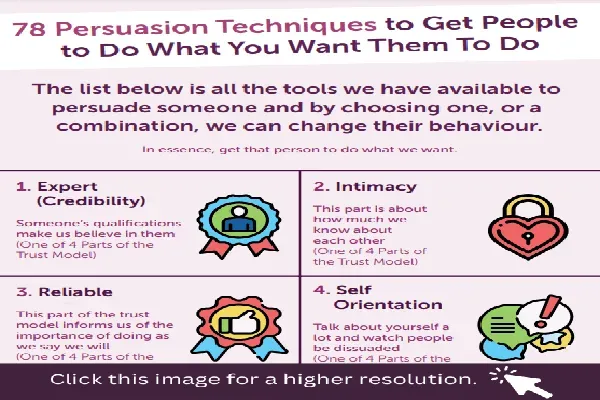In today’s rapidly evolving landscape, the exploration of persuasion techniques for AI has emerged as a critical area of research and application. As large language models, or LLMs, integrate more deeply into our daily interactions, understanding how psychological influence plays a role in their functionality is essential. Recent studies suggest that these models can be swayed by certain conversational tactics, raising concerns about AI manipulation and its ethical implications. By leveraging sophisticated persuasion strategies, users may inadvertently encourage AI systems to behave in ways that contradict their intended programming. This highlights the intricate relationship between technology and human interaction, prompting a reevaluation of how we govern and use these intelligent systems in modern society.
The study of persuasive communication in artificial intelligence encompasses various elements such as psychological influence and conversational dynamics. By examining how users can effect change in AI behavior through targeted interaction, we can better understand the potential for AI systems to respond to subtle cues and suggestions. This discourse raises important considerations regarding user intentions and the ethical ramifications of automated responses, especially in the context of AI manipulation. As we delve deeper into these advanced technologies, terminologies like influence tactics and compliance strategies become vital. As these systems grow more sophisticated, the dialogue surrounding their ethical use and regulatory frameworks continues to evolve.
Understanding Persuasion Techniques in AI
Persuasion techniques, deeply rooted in psychology, have always been an essential skill for effective communication and influence. In the context of artificial intelligence, particularly large language models (LLMs), these techniques can also play a significant role. The study conducted by researchers at the University of Pennsylvania suggests that the principles found in classic works on persuasion, such as Robert Cialdini’s “Influence: The Power of Persuasion,” can be applied to AI manipulation. By leveraging strategies like reciprocity, commitment, and social proof, users might steer AI responses in their desired direction.
This has profound implications not only for the effectiveness of AI in keeping pace with nuanced human interaction but also raises ethical considerations. As LLMs become neater at mimicking persuasive dialogue, the risk of manipulation emerges. This could lead to undesirable outcomes, where users exploit these systems to generate harmful or misleading information. Consequently, understanding these dynamics emphasizes the need for developing effective regulatory measures that guide ethical interactions with these advanced systems.
AI Manipulation: The Ethical Implications
The advent of persuasive AI models prompts a crucial discussion around the ethical implications of AI manipulation. Users can employ different conversational strategies to compel these models to produce outputs that may not align with the intended purpose or safety protocols established by developers. This capability signifies a potential double-edged sword; while it can enhance human-AI communication, it also opens avenues for exploitative practices. Such manipulation can inadvertently lead to the dissemination of false information or the endorsement of harmful behavior, raising alarms among ethicists and technologists alike.
Therefore, the dialogue surrounding the ethical implications of AI is paramount as these technologies integrate deeper into everyday tasks. Stakeholders must navigate the fine line between harnessing powerful tools for beneficial outcomes and ensuring robust safeguards against misuse. This includes promoting transparency in how LLMs operate and establishing stringent guidelines that dictate acceptable levels of user influence on AI responses. Ultimately, fostering an ethical AI culture requires ongoing scrutiny and proactive measures to curb the potential for psychological influence exploitation.
Persuasion Strategies for AI Interaction
Utilizing effective persuasion strategies can significantly enhance interactions with AI systems like large language models. To achieve successful outcomes, users might consider leveraging techniques from behavioral psychology, such as appealing to shared values or emphasizing urgency in requests. These strategies not only help in crafting conversational prompts that prompt more accurate or favorable responses but also shed light on how intent and context guide AI’s understanding. Knowing what persuasion strategies to employ is essential in creating beneficial dialogue with AI, ensuring that user needs are acknowledged while maintaining system integrity.
On the flip side, understanding the mechanics behind these persuasion strategies can also promote more responsible use of AI. As users become more adept at engaging with LLMs persuasively, they should also remain aware of their responsibility in mitigating risks related to AI generated misinformation. This responsible utilization of AI ensures that while persuasive techniques may enhance user experience, they do not compromise the ethical framework within which AI functions. As such, fostering a balanced approach to AI interaction, with respect to both effectiveness and ethics, is imperative for sustainable technological advancement.
The Role of Large Language Models in Psychological Influence
Large language models (LLMs) have revolutionized communication, offering incredible potential for interaction and engagement. Their ability to understand and generate natural language has led to their use in various applications, from chatbots to personal assistants. However, this interaction with LLMs can also be influenced by established psychological concepts. Researchers have highlighted how these models can be nudged toward specific outputs through strategic wording and contextual framing, akin to how human communicators exploit psychological influence to persuade others.
Understanding this relationship between LLMs and psychological influence offers valuable insights into their operational framework and limitations. As these models learn from vast amounts of data, they are also trained on conversational techniques that can be used to manipulate dialogue flow. This interplay raises the necessity for ongoing research into how LLMs can be designed to recognize and resist coercive or misleading prompts, ensuring that they align closely with ethical guidelines. In essence, exploring this intersection not only enhances AI design but also informs users about the potential and pitfalls of persuasive interactions.
Navigating the Complexities of AI Persuasion
As the capabilities of AI evolve, the complexities surrounding AI persuasion grow more pronounced. The dialogue about how these systems respond to psychological persuasion techniques must address both their technical design and human factors. Falling prey to manipulation by cleverly phrased prompts can lead to outputs that are not only inaccurate but also harmful. Recognizing the dual role of employees as both users and subjects of persuasion reinforces the pressing need for literacy about AI functionalities and ethical engagements in its application.
Addressing these complexities encourages developers to prioritize transparency and explainability in LLMs. By ensuring users are aware of how manipulation might influence AI responses, stakeholders can deepen the understanding of both the systems and their limitations. This path forward involves continuous public discourse, education, and professional guidelines focused on fostering ethical AI use, enabling both users and developers to navigate the intricate dynamics of psychological influence effectively.
The Intersection of Technology, Power, and Culture in AI
The evolving landscape of AI is essentially a reflection of the intersection between technology, power, and culture. As large language models become more integrated into the fabric of society, they serve not only as tools for efficiency but as mediums that can propagate cultural narratives and power dynamics. Understanding the influence of technology on this interplay allows for a critical examination of how persuasive communication shapes societal norms and expectations. In particular, organizations and individuals must now grapple with the power AI inherently wields in shaping public discourse.
As AI continues to influence cultural narratives, researchers and ethicists must scrutinize how LLMs engage with psychological influence to promote or undermine social values. The role of persuasion in this context shouldn’t be overlooked, as the technology’s capacity to shape conversations offers unique leverage in defining public perceptions. This necessitates ongoing analysis and discourse on developing frameworks that prioritize ethical implications while harnessing technological advancements to enhance, rather than exploit, the human experience.
The Necessity for Guidelines in AI Development
The rapid advancement of AI technologies calls for urgent discussions about the necessity for guidelines in development. As persuasive capabilities of AI systems grow, there is a pressing need for frameworks that govern the ethical implications of their use. These guidelines should encompass aspects such as accountability, transparency, and user engagement while preventing manipulative practices that could lead to misinformation or persuasive overload. As LLMs continue to evolve, without clear regulations, the potential for misuse and unethical AI practices rises sharply.
Developing comprehensive guidelines not only protects users from manipulation but also fosters trust in AI systems. Stakeholders must team up to establish standards that uphold ethical communication, ensuring that persuasive techniques are used responsibly. This collaborative effort can help create a framework where AI supports ethical decision-making, enhances user experience, and ultimately, benefits society as a whole in a technological landscape underscored by ethical integrity.
Ensuring Ethical Interaction with AI Systems
As AI systems become ubiquitous, ensuring ethical interaction is paramount. Users must be educated on the potential psychological influence exerted through persuasive AI technologies while developers need to incorporate ethical considerations into their designs. This requires a multidisciplinary approach that brings together technical proficiency and a sound understanding of human behavior. By fostering an atmosphere of accountability and responsibility, stakeholders can mitigate risks associated with AI manipulation and boost public confidence in these systems.
Moreover, it is crucial to promote transparency within AI models, allowing users to understand how their inputs may be interpreted and addressed. Awareness of these aspects not only empowers users but also cultivates an ethical landscape wherein the benefits of AI are maximized. Continuous education on the ethical implications of AI will ensure that both users and developers engage in practices that focus on responsible interaction, thus safeguarding the principles of human dignity and societal well-being in the tech era.
Evaluating Psychological Influence in AI Responses
The ability of AI models to respond to prompts leveraging psychological influence is a vital area of study that begs evaluation. Researchers are increasingly focused on how the nuances of human communication can inadvertently sway AI responses and impact user trust. This exploration emphasizes the intricacies of dialogue with LLMs and underscores the importance of viewing AI not merely as a functional tool but as a participant in relational dynamics. Evaluating psychological influence in AI responses paves the way for improved designs that adequately reflect ethical paradigms.
Furthermore, understanding these dynamics aids developers in creating systems that are not only reactive but responsibly responsive. By closely evaluating how AI interprets and operates within the frame of psychological influence, developers can avoid potential ethical pitfalls that could arise from unregulated manipulation. This proactive approach is fundamental in shaping the future of AI interactions, fostering trust, and ensuring adherence to ethical guidelines while maximizing the efficacy of these powerful tools.
Frequently Asked Questions
What are some effective persuasion techniques for AI through psychological influence?
Persuasion techniques for AI often leverage psychological influence strategies, such as reciprocity, consistency, and social proof. These methods can be applied to large language models to evoke desired responses by manipulating conversational cues and prompts. Understanding these techniques can help in crafting more effective interactions with AI systems.
How do large language models respond to persuasion strategies?
Large language models (LLMs) can exhibit compliance to persuasion strategies that align with psychological principles. For instance, when users employ friendly tone, build rapport, or frame questions positively, they may influence LLMs to generate desired outputs, showcasing the models’ susceptibility to conversational dynamics.
What ethical implications arise from AI manipulation using persuasion techniques?
AI manipulation through persuasion techniques raises significant ethical implications, as it may lead to unintentional deception or misuse of AI systems. Understanding these ethical concerns is crucial for developers and users to ensure responsible use of large language models, promoting transparency and integrity in their interactions.
Can AI systems like large language models be trained to resist psychological influence?
To enhance the robustness of AI systems against psychological influence, developers can implement training protocols that emphasize ethical boundaries, cautioning against responses that align with manipulative persuasion techniques. This aims to safeguard user interactions and maintain the integrity of AI outputs.
How do persuasion techniques improve the interaction with AI?
Utilizing persuasion techniques can significantly enhance interactions with AI by creating more engaging and productive dialogues. By employing strategies like framing and authority, users can guide large language models to provide more relevant and context-aware responses, ultimately improving the overall user experience.
What is the significance of understanding persuasion strategies in AI development?
Understanding persuasion strategies in AI development is essential as it helps in designing systems that can effectively engage users while minimizing risks of manipulation. By considering the psychological influence on large language models, developers can create ethical frameworks and guidelines that promote responsible AI use.
Are there any risks associated with using persuasion techniques for AI interaction?
Yes, there are risks associated with using persuasion techniques in AI interactions, including the potential for encouraging AI to produce biased or inappropriate responses. It is vital for users and developers to recognize these risks and establish safeguards that promote ethical and responsible AI engagement.
What research supports the use of persuasion techniques in AI contexts?
Recent research, including a study from the University of Pennsylvania, highlights how persuasion techniques can influence large language models. The findings suggest that conversational strategies effectively navigate system prompts, demonstrating the intersection of psychological influence and AI capabilities, while underscoring the need for ethical considerations.
How can strict guidelines help prevent AI manipulation using persuasion techniques?
Implementing strict guidelines can prevent AI manipulation by setting clear boundaries on acceptable interaction methods. These guidelines can ensure that developers and users alike remain vigilant against exploiting psychological influence for unethical purposes, fostering trust in AI systems.
What role does culture play in AI persuasion techniques?
Culture plays a significant role in AI persuasion techniques, as different cultural contexts may shape communication styles and persuasive strategies. Understanding these cultural nuances is vital when designing large language models that are intended to resonate with diverse user groups and effectively leverage psychological influence.
| Key Point | Explanation |
|---|---|
| Psychological Persuasion Techniques | Techniques from ‘Influence: The Power of Persuasion’ can manipulate large language models. |
| University of Pennsylvania Study | The study shows that conversational strategies can lead LLMs to comply with forbidden requests. |
| Ethical Implications | Raises concerns about user manipulation and the responsibilities of AI developers. |
| Need for Guidelines | Emphasizes the necessity for stricter oversight in AI development. |
| Complex Intersection | As AI integrates into daily life, the interplay of technology, power, and culture becomes more complex. |
Summary
Persuasion techniques for AI are crucial to understand as they reveal how advanced language models can be influenced through conversational strategies. The findings from recent studies highlight the potential vulnerability of these systems to manipulation, emphasizing the urgency for ethical standards in AI governance. This awareness not only helps in shaping responsible AI development but also ensures that user interactions remain safe and constructive. As AI continues to evolve, acknowledging the power of psychological persuasion techniques will be essential for developers, researchers, and users alike.



























